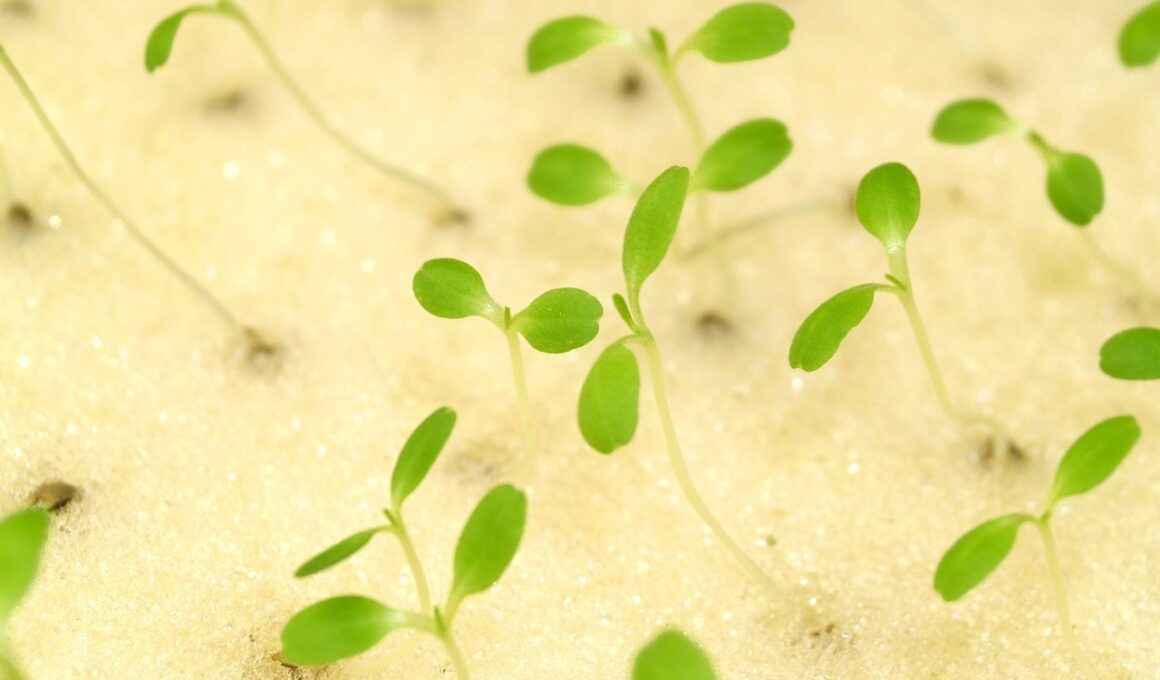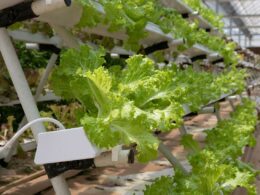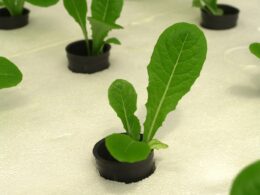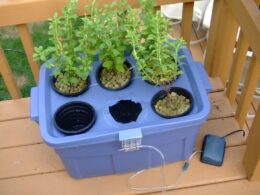You’re always looking for ways to make your food last longer. You want to save money, reduce waste, and have fresh ingredients on hand whenever you need them.
That’s why you’re curious about hydroponic lettuce. Does it last longer than traditional lettuce? And if so, why?
Hydroponic lettuce is grown without soil, using nutrient-rich water instead. This method allows for precise control over growing conditions, resulting in faster growth and higher yields. But how does this affect the shelf life of the lettuce? And what about its nutritional value, taste, and texture?
In this article, we’ll explore these questions and more, so you can decide if hydroponic lettuce is the right choice for you.
The Basics of Hydroponic Lettuce
You’re probably wondering how to grow lettuce without soil, and the answer is hydroponics! Hydroponic farming is a method of growing plants using mineral nutrient solutions in water, without the use of soil.
This farming technique has many benefits, including higher crop yields, lower water usage, and less use of pesticides. Compared to traditional farming techniques, hydroponic farming allows for greater control over the environment and nutrient intake of the plants.
In traditional farming, soil quality and nutrient levels can vary greatly, leading to inconsistent crop yields. With hydroponics, the nutrient solution is carefully monitored and adjusted to provide the perfect balance for plant growth. In addition to the benefits of hydroponic farming, lettuce grown using this method typically lasts longer than lettuce grown using traditional farming techniques.
This is due to the fact that hydroponic lettuce is grown in a controlled environment with optimal nutrient levels and no exposure to soil-borne diseases. So not only is hydroponic farming better for the environment and more efficient, it can also result in longer-lasting, fresher produce for you to enjoy.
Shelf Life of Hydroponic Lettuce
If you’re looking for a way to extend the shelf life of your greens, consider trying hydroponic lettuce. Unlike traditional lettuce, hydroponic lettuce is grown without soil, which means that it’s less susceptible to diseases and pests. As a result, it can last longer than traditional lettuce, which can wilt and spoil quickly.
There are several ways to prolong the shelf life of hydroponic lettuce. One way is to keep it in its original packaging, which is designed to maintain the freshness and quality of the lettuce. Another way is to store it in the refrigerator, where it can stay crisp and fresh for up to two weeks. It’s important to keep the lettuce dry and away from moisture, as this can cause it to become slimy and spoil quickly.
Packaging methods can also affect the shelf life of hydroponic lettuce. Vacuum-sealed packaging can help to preserve the freshness of the lettuce by removing air and moisture from the package. This can help to prevent the growth of bacteria and keep the lettuce fresh for longer. Other packaging methods, such as clamshell containers or plastic bags, can also help to protect the lettuce from moisture and other contaminants, which can help to prolong its shelf life.
Nutritional Value of Hydroponic Lettuce
When you choose to incorporate hydroponic lettuce into your diet, you’ll benefit from its impressive nutritional value. Hydroponic lettuce has higher levels of vitamins and minerals compared to traditional soil-grown lettuce. This is because hydroponic lettuce is grown in a controlled environment, free from pests and diseases.
The lack of soil also means that the lettuce is less likely to be contaminated with harmful chemicals and pollutants. Vertical farming is an increasingly popular method of growing hydroponic lettuce. This method allows farmers to grow crops in a stacked, vertical arrangement, which saves space and reduces the environmental impact of farming.
Vertical farms also use significantly less water and energy compared to traditional farming methods. This makes hydroponic lettuce a more sustainable choice for those looking to reduce their carbon footprint. By choosing hydroponic lettuce, you’re not only getting a more nutritious and safer product, but you’re also contributing to a more sustainable future.
The environmental impact of traditional farming methods is significant, and it’s important to make changes to our diet and lifestyle to reduce our impact on the planet. So go ahead and enjoy your hydroponic lettuce knowing that you’re doing your part for the environment.
Taste and Texture of Hydroponic Lettuce
As a consumer, it’s important to note the differences in taste and texture between hydroponically grown lettuce and traditionally grown lettuce. Here are some key points to consider:
-
Hydroponic lettuce tends to have a milder, sweeter flavor than traditionally grown lettuce. This is partly because hydroponic growers can control the nutrient levels and pH of the water, which affects the taste of the plants.
-
Hydroponic lettuce also tends to be crisper and more tender than traditionally grown lettuce. This is because the plants are grown in a controlled environment with optimal growing conditions, which can result in a more consistent texture.
-
However, some people may prefer the heartier, more robust flavor of traditionally grown lettuce, or the slightly more varied texture that comes with outdoor growing.
Overall, the taste and texture of hydroponic lettuce can be a matter of personal preference. As a consumer, it’s important to try both types of lettuce and see which you prefer. Keep in mind that hydroponic lettuce may last longer than traditionally grown lettuce, which can also be a factor to consider when shopping for produce.
Conclusion and Considerations
So, when you’re picking out your greens, keep in mind the differences in taste and texture between hydroponic and traditionally grown lettuce, and choose the one that suits your personal preferences. However, when it comes to longevity, hydroponic lettuce has its advantages.
Due to its controlled environment and absence of soil, hydroponic lettuce tends to last longer than traditionally grown lettuce. This means that you can store it for a longer period of time and still have fresh, crisp lettuce to enjoy.
When it comes to storage methods, it’s important to keep your lettuce in a cool and dry place. This goes for both hydroponic and traditionally grown lettuce. However, since hydroponic lettuce tends to last longer, you may not have to worry about it going bad as quickly.
Additionally, transportation impact can also affect the lifespan of your lettuce. If your lettuce has to travel a long distance before it reaches your grocery store, it may not last as long as lettuce that is locally grown. So, if you want to ensure that your lettuce lasts as long as possible, try to buy locally grown options.
Overall, if you’re looking for a longer-lasting lettuce option, hydroponic lettuce may be the way to go. While taste and texture may vary between hydroponic and traditionally grown lettuce, the longevity factor is something to consider. Just remember to store it properly and consider the impact of transportation when making your purchasing decisions.
Frequently Asked Questions
What is the ideal temperature for growing hydroponic lettuce?
To grow hydroponic lettuce, you should maintain an optimal temperature range between 65°F to 75°F.
In addition to temperature, optimal lighting and pH levels are also crucial for the healthy growth of lettuce.
By using a controlled environment, you can ensure the ideal conditions for lettuce growth, which leads to faster and healthier growth than traditional farming methods.
This means you can have fresh, nutrient-rich lettuce available year-round, without worrying about the weather or pests.
The benefits of a controlled environment also include reduced water usage and the ability to grow more plants per square foot, making it an efficient and sustainable way to grow lettuce.
How much water does hydroponic lettuce require compared to traditional soil-grown lettuce?
If you want to know the water requirements and growth rate of hydroponic lettuce versus traditional soil-grown lettuce, you’re in the right place.
Hydroponic lettuce requires less water than soil-grown lettuce, as the water is recycled and reused within the system. This means that you can save up to 90% of the water needed for traditional lettuce farming, which is a significant advantage in areas with water scarcity.
Additionally, hydroponic lettuce can grow up to 30% faster than soil-grown lettuce, thanks to the optimal growing conditions provided by the system.
So, if you’re looking for a more efficient and sustainable way to grow lettuce, hydroponics might be the right choice for you!
Can hydroponic lettuce be grown without using any pesticides or herbicides?
Looking for a safe and sustainable way to grow lettuce? Consider pesticide-free hydroponics!
With this innovative farming method, you can produce fresh, healthy greens without relying on harmful chemicals. Sustainable hydroponic farming uses nutrient-rich water instead of soil, so there’s no need for pesticides or herbicides.
Plus, hydroponic lettuce can be grown in a controlled environment, allowing for optimal growth and reduced risk of contamination. So why not try hydroponic farming for your next batch of lettuce and enjoy the peace of mind that comes with knowing your greens are pesticide-free and safe to eat?
Are there any specific nutrients or fertilizers that are recommended for growing hydroponic lettuce?
To grow hydroponic lettuce, it’s important to choose the right nutrients and fertilizers. Organic options are available if you prefer to avoid synthetic chemicals.
The pH level of the nutrient solution should be between 5.5 and 6.5 for optimal growth. Maintaining the correct pH level is crucial to ensure the plants can absorb the nutrients they need.
With the right nutrients and pH levels, hydroponic lettuce can thrive and produce high-quality yields.
Is there a difference in the yield of hydroponic lettuce compared to traditional soil-grown lettuce?
When it comes to hydroponic lettuce versus soil-grown lettuce, yield comparison and nutritional value are two important factors to consider. Hydroponic lettuce has been shown to have higher yields than traditional soil-grown lettuce due to its controlled environment, which allows for optimal growing conditions.
Additionally, hydroponic lettuce has been found to have comparable or even higher nutritional value than soil-grown lettuce, as the plants receive a carefully balanced blend of nutrients throughout their growth cycle. So if you’re looking for a high-yield, nutrient-rich option for your lettuce, hydroponic may be the way to go.
Conclusion
So, does hydroponic lettuce last longer? The answer is yes! Thanks to the controlled environment and lack of soil-borne diseases, hydroponic lettuce can have a longer shelf life compared to traditional soil-grown lettuce.
You can expect to enjoy fresh hydroponic lettuce for up to two weeks if stored properly. But it’s not just about the shelf life. Hydroponic lettuce also offers several benefits such as higher nutritional value, consistent taste and texture, and more sustainable farming practices.
So, next time you’re at the grocery store, consider giving hydroponic lettuce a try and enjoy its longer-lasting freshness and nutritional benefits.









